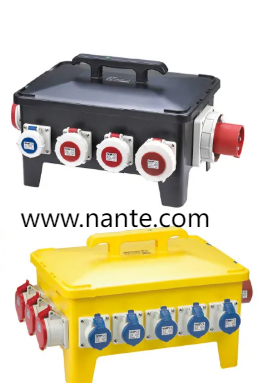As cities deploy smart street lighting and environmental sensor networks, the distribution Socket Box has emerged as a critical component for powering and connecting edge devices. By integrating communication modules or reserving fiber ports alongside circuit breakers and outlets, these enclosures manage both electricity and data at lamp posts and roadside cabinets. This dual capability simplifies supply to LED fixtures, air quality sensors, and traffic counters, reducing installation complexity while enhancing system reliability across urban IoT deployments.
In municipal lighting projects, centralized power feeds alone cannot meet the need for localized control and monitoring. A modular socket enclosure delivers power directly to individual light fixtures and houses network interfaces that link to central management platforms. Technicians install plug-in communication cards—such as LoRa or NB-IoT modems—into designated slots, enabling real-time adjustment of brightness levels or fault alerts without separate junction boxes. This consolidated approach cuts trenching costs and speeds rollout of adaptive lighting schemes for energy savings and public safety improvements.
Environmental monitoring networks rely on distributed sensors mounted on street poles and park signs. Each sensor node requires both stable power and robust data connectivity. Distribution Socket Boxes with preconfigured fiber or Ethernet connectors provide secure paths for sensor data backhaul. Outdoor cabinets often include surge suppression to protect delicate electronics from transient spikes, while integrated uninterruptible power supplies keep sensors online during short grid outages. As a result, city planners gain continuous visibility into conditions like temperature, noise, and air pollution without worrying about frequent maintenance calls.
Traffic management systems also benefit from edge-level power and data hubs. Video cameras, radar sensors, and dynamic signage draw power directly from nearby distribution enclosures. Built-in PoE injectors in specialized modules allow both power and network signals to share a single cable, reducing cable runs and simplifying conduit work. This minimizes visual clutter along streetscapes and ensures consistent service for congestion monitoring, parking guidance, and pedestrian safety alerts.
Security is an essential consideration for public infrastructure. Outdoor socket cabinets incorporate lockable doors and tamper-resistant fasteners to prevent unauthorized access. Internal compartments are divided between power and data sections, keeping sensitive electronics shielded from accidental contact. Gasketed seals and IP-rated construction guard against moisture, dust, and insect ingress, maintaining long-term performance in sidewalk and roadside environments subject to harsh weather and vandalism attempts.
Maintenance efficiency improves significantly with modular designs. Swap-out modules let field crews replace a faulty communication card or breaker without disconnecting other circuits. Color-coded inserts and clear labeling inside the door guide technicians through safe isolation procedures. By housing both power and data components within a single unit, cities reduce the number of service visits required to support growing networks, lowering operational costs and minimizing disruptions in public spaces.
As edge computing gains traction, some socket enclosures host microcontrollers and local analytics servers. These on-site processors aggregate data from multiple sensors before forwarding summaries to cloud platforms, cutting network bandwidth and reducing latency for critical applications like traffic light coordination or emergency response. Distribution enclosures outfitted with cooling vents or small fans can maintain optimal internal temperatures, ensuring electronic components remain within safe operating ranges.
Aesthetic integration helps maintain clean streetscapes. Slimline cabinets blend into existing lamp post designs or attach to building facades with minimal visual impact. Neutral paint options and concealed mounting hardware allow socket boxes to disappear into their surroundings, supporting urban design guidelines that favor unobtrusive infrastructure. Public acceptance of smart city projects often hinges on such thoughtful integration, as residents value both functionality and appearance.
For municipalities planning new smart district initiatives or upgrading legacy street networks, the choice of power and data distribution hardware lays the foundation for future expansions. Working with a supplier that offers customizable distribution Socket Box solutions ensures that specific protocol needs, power demands, and security requirements all align under one roof. Nante provides a broad selection of modular enclosures and communication modules, backed by technical support to guide project teams through design, installation, and maintenance phases.
To learn more about configurable socket boxes suited for street lighting, environmental monitoring, and traffic management, visit www.nante.com for detailed product specifications and solution options. Nante's flexible designs help cities implement smart city infrastructure efficiently, ensuring a reliable backbone for urban IoT networks.
